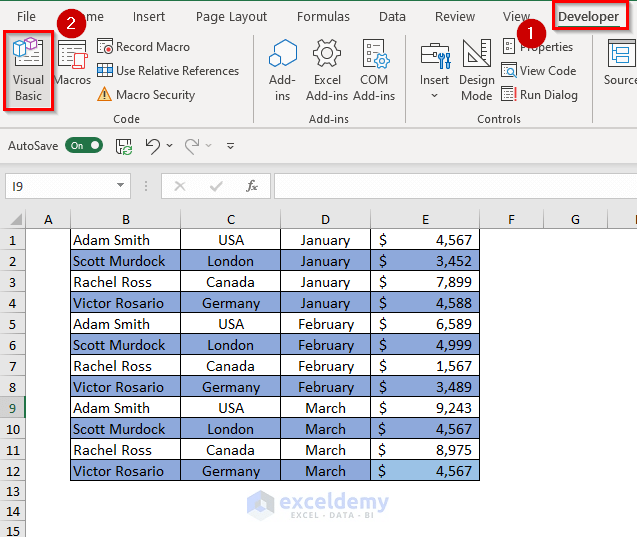Split Excel Sheets into Pages: Easy Guide

Whether you're managing large datasets for business, academic research, or personal organization, Excel remains one of the most powerful tools available. However, when dealing with extensive spreadsheets, readability and management can become cumbersome. This guide explores how you can split your Excel sheets into pages, making navigation, printing, and analysis much easier.
Understanding the Need for Splitting Sheets into Pages

Before we dive into the methods, it's crucial to understand why splitting sheets into pages is beneficial:
- Enhanced readability: Breaking down a large sheet into smaller, more manageable pages.
- Easier navigation: Finding specific data or sections becomes less time-consuming.
- Improved printing: Print particular sections without the entire sheet, saving time and resources.
- Data management: Simplified data manipulation and focus on specific datasets.
How to Split Excel Sheets into Pages

1. Using Page Breaks

The simplest way to split sheets into pages is by using page breaks. Here's how:
- Navigate to the "Page Layout" tab in Excel.
- Select "Breaks" from the ribbon and choose "Insert Page Break."
- Drag the page break line to the desired position where you want the split to occur.
- Vertical Split: Drag the line horizontally to create a vertical page break.
- Horizontal Split: Drag the line vertically to create a horizontal page break.
⚠️ Note: If you’re working on an older version of Excel (prior to 2016), you might need to manually adjust these breaks as they don't move automatically when rows or columns are added or deleted.
2. Setting Print Areas

If your purpose is to print specific sections:
- Select the range of cells you want to print.
- Go to the "Page Layout" tab, click on "Print Area," and then choose "Set Print Area."
- Excel will now consider this area as one page for printing purposes.
3. Using Filters for Data Management

While not a true split, filters can help in data segmentation:
- Select your data range.
- Go to "Data" > "Filter."
- Use the filter dropdowns to display only the data you need, effectively creating a 'visual' page break.
4. VBA Scripting for Advanced Splitting

For more dynamic control or frequent splitting, you might consider:
- Writing a VBA script to automatically split data based on predefined criteria.
- Here's a basic example of VBA code:
Sub SplitData()
Dim wsSource As Worksheet
Dim wsNew As Worksheet
Dim lRow As Long, lCol As Long
Dim rng As Range
Dim strWSName As String
Set wsSource = ActiveSheet
lRow = wsSource.Cells(wsSource.Rows.Count, 1).End(xlUp).Row
lCol = wsSource.UsedRange.Columns.Count
' Loop through rows to split into new sheets
For i = 2 To lRow 'Assuming data starts from row 2
strWSName = wsSource.Cells(i, 1).Value
If WorksheetExists(strWSName) = False Then
Set wsNew = Worksheets.Add
wsNew.Name = strWSName
Else
Set wsNew = Sheets(strWSName)
End If
Set rng = wsSource.Range(Cells(i, 1), Cells(i, lCol))
rng.Copy wsNew.Range("A1")
Next i
End Sub
💡 Note: Remember to add the `WorksheetExists` function to check if the sheet already exists before adding or renaming.
Tips for Effective Page Splitting

- Understand your data: Know what data needs to be together on a single page.
- Use headers and footers: Ensure every new page includes necessary context like titles or legends.
- Set proper margins: This ensures all content fits within the page boundaries.
- Check for page breaks: Use print preview or page layout view to check where breaks naturally fall.
Conclusion

By using Excel's built-in features like Page Breaks, Print Areas, or even leveraging VBA scripts, you can effectively split large sheets into manageable pages. This practice not only improves your work efficiency but also ensures that your data remains well-organized and accessible, whether you’re presenting, analyzing, or just keeping track of complex information. Whether for personal use, business reporting, or academic analysis, mastering the art of splitting Excel sheets into pages can significantly enhance your productivity and document clarity.
Can I undo a page break in Excel?

+
Yes, you can undo page breaks by selecting “Breaks” under the “Page Layout” tab and choosing “Remove Page Break.” If you need to remove all breaks, select “Reset All Page Breaks.”
What is the difference between manual and automatic page breaks in Excel?

+
Manual page breaks are user-defined breaks you add to control where the page should split. Automatic page breaks are set by Excel based on page size, margins, and scaling, which can be adjusted by the user.
How do I know where the page breaks are in my Excel sheet?

+
Switch to Page Layout View by going to “View” > “Page Layout.” Here, dotted lines represent automatic page breaks, and solid lines show manual page breaks.
Can I split an Excel sheet based on column content?

+
Yes, you can use a VBA script or filter to divide data based on column values. However, automatic functionality like this isn’t built into Excel without scripting.
Do page breaks affect data calculations or Excel functions?

+
No, page breaks are strictly for formatting and printing purposes. They do not influence the computational operations or functions in Excel.



